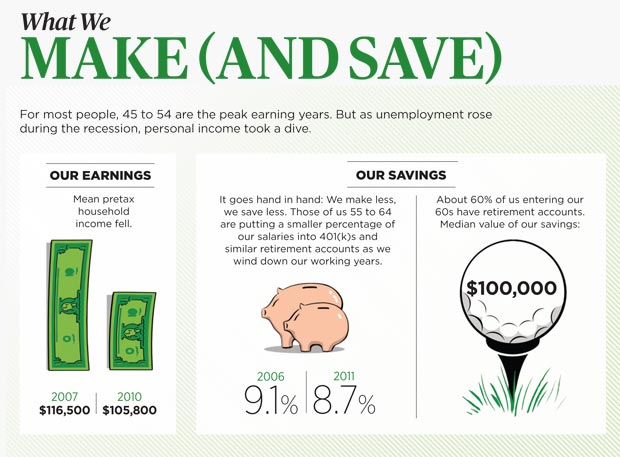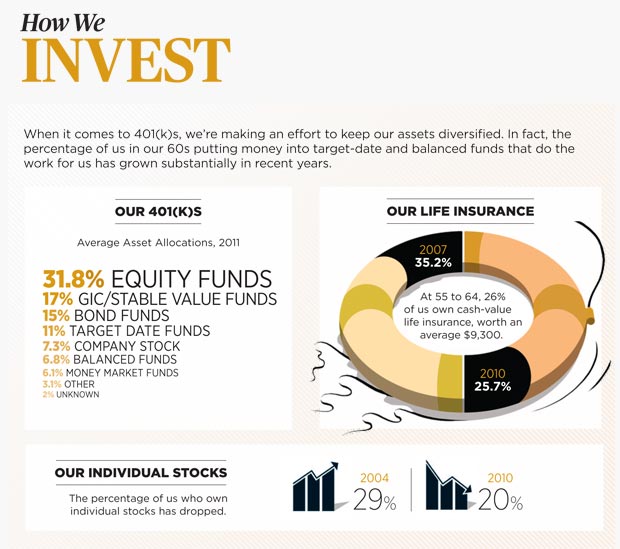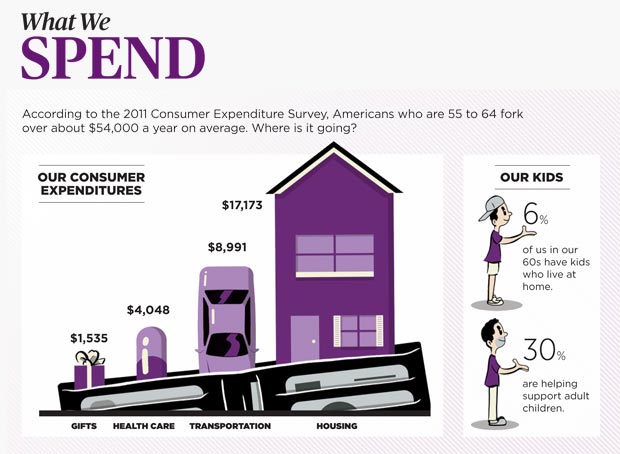Staying Fit


Where do you stand, financially speaking, compared with your peers?
Are you making more than your college classmates? How do your saving and spending patterns stack up against those of the rest of your generation? We're forever asking such questions.


AARP Membership— $12 for your first year when you sign up for Automatic Renewal
Get instant access to members-only products and hundreds of discounts, a free second membership, and a subscription to AARP the Magazine.
"Our brains are comparison machines, always tuned in to relative differences," says social psychologist Heidi Grant Halvorson, coauthor of Focus: Use Different Ways of Seeing the World for Success and Influence.
Sign up for the AARP Money Newsletter
Trouble is, comparing can get discouraging. So don't get hung up on what might have been. Instead, Halvorson says, "look at people who are doing it right — or at least better. Don't think 'How good am I at this?' Think 'How can I get better?' "
See also: Take charge of your money at 50+ | And at 70+
The tips on the next pages will help you do just that, walking you through the big financial questions you'll face in the next 10 years of your life. It's a pocket guide to your money in your 60s: how to maximize your income, rethink your investments, spend smarter and save more, starting right now.


AARP Financial Ambassador Jean Chatzky
Financial expert Jean Chatzky is a regular contributor to AARP The Magazine and AARP.org. Read Jean's articles, watch her money tips videos and learn more about how to save more and spend less at aarp.org/jeanchatzky.
Also, be sure to make use of AARP's suite of interactive Money Tools — including the AARP Retirement Calculator and the Social Security Benefits Calculator — at aarp.org/tools.


The Plan for What You Owe (and Own)
1. Start a debt-busting avalanche
Still carrying car loans, credit card bills, lingering Parent PLUS college loans or personal loans? Use these remaining full-employment years to knock down these nondeductible debts.
You'll get the biggest bang for each buck by paying off the highest interest rate debt in your portfolio first, while making minimum payments on the remainder. It's called the avalanche method, and it gets you out of debt cheapest and fastest.
If you have a credit card charging you 19 percent and a college loan at 7.9 percent, throw every extra dollar you have at the higher rate. Once that debt is retired, move on to the next highest rate. (To run your own debt-free calculation, try the Credit Card Avalanche Calculator at JeanChatzky.com.)
2. Make a move on your mortgage
If you've paid off the mortgage, give yourself a hand.
"The happiest clients with the least stress are the ones who go into retirement completely debt free, including the mortgage," says financial planner Bill Losey, author of Retire in a Weekend.
It's easier to deal with the income drop of retirement when the roof over your head isn't going anywhere. Still, the number of 60-somethings with mortgages has grown dramatically since 2000: A third of those 65 and up have housing debt. If you're a long way from paying it off and your interest rate is 4.5 percent or higher, moving to a 10- or 15-year loan can help speed the process (but payments will be higher). Adding an extra payment or two per year might accomplish the same goal without the expense of refinancing.




































































More on money
5 Ways to Make Money by Cleaning Out Your Closet
Streamlining your clothing clutter really can be good for your wallet.